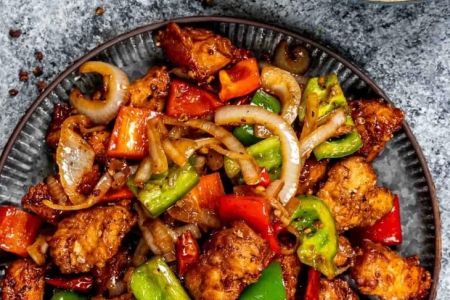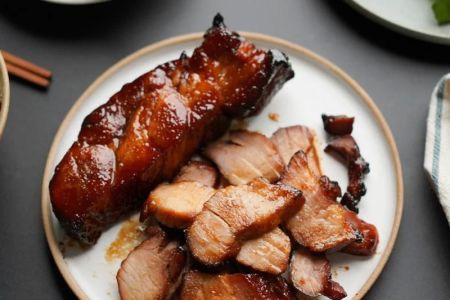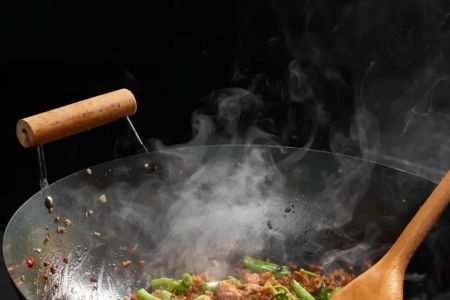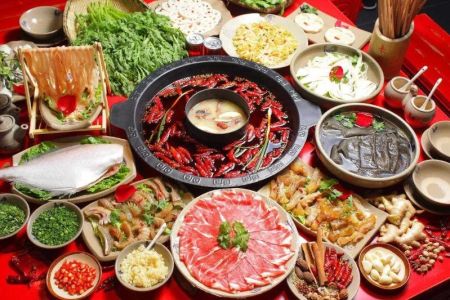1. The Secret Behind Restaurant-Quality Chinese Food
When I first decided to try cooking Chinese food at home, I had high expectations. After all, I had enjoyed countless delicious Chinese dishes at my favorite restaurants, and I was determined to recreate those flavors in my own kitchen. What I quickly discovered was that making Chinese food like the restaurants requires a combination of the right ingredients, techniques, and a bit of know-how.
As I began my culinary journey, I realized that Chinese cooking is as much about precision and timing as it is about the flavors. The deep umami, savory sauces, and aromatic spices all come together to create the dishes that we love so much. But there are a few key differences between home cooking and restaurant cooking, and I want to share my discoveries with you so you can achieve restaurant-style Chinese food right in your own kitchen.
2. Key Ingredients That Make Chinese Food Taste Authentic
One of the biggest lessons I learned in making Chinese food at home was the importance of using authentic ingredients. While it might be tempting to use substitutions or shortcuts, I found that sticking to the traditional ingredients really makes a difference in achieving the flavors we love in Chinese cuisine.
2.1 Soy Sauce and Oyster Sauce
It wasn’t until I used real, high-quality soy sauce and oyster sauce that I began to get the taste I was looking for. Most of the Chinese dishes I cooked at home lacked that deep, savory flavor that I had enjoyed at restaurants. The key is to use good soy sauce, preferably a light soy sauce for stir-frying and a dark soy sauce for braising. Oyster sauce, with its rich umami flavor, is a must in dishes like stir-fried vegetables, beef with broccoli, and many others.
2.2 Rice Wine and Vinegar
Another essential ingredient I found was rice wine, which adds a touch of sweetness and complexity to the food. If you're cooking dishes like kung pao chicken or mapo tofu, rice wine adds the right amount of depth to the sauce. I also learned that Chinese rice vinegar is much milder than regular vinegar, which is important when making dishes like hot and sour soup or dumplings. The balance of sweetness, acidity, and savory flavors is what gives Chinese dishes their distinct taste.
2.3 Fresh Aromatics: Ginger, Garlic, and Scallions
Ginger, garlic, and scallions are the backbone of many Chinese dishes, and I quickly realized how important it is to use fresh aromatics. The fragrance of freshly minced garlic, the heat from ginger, and the subtle onion flavor from scallions come together to create the base of many stir-fries and sauces. I also learned that the timing of when you add these ingredients is crucial—getting them just right is the key to making sure they infuse the oil without burning.
3. Mastering the Techniques: Stir-Frying, Steaming, and More
While the ingredients are important, the cooking techniques play just as big a role in achieving that restaurant-style Chinese food. After experimenting with different methods, I learned that certain techniques, like stir-frying at high heat and steaming, are fundamental to Chinese cooking.
3.1 Stir-Frying: The Secret to Quick and Flavorful Dishes
Stir-frying is one of the most iconic Chinese cooking techniques, and it's not as simple as tossing everything into a hot pan. The key to a great stir-fry is high heat and speed. I always use a wok for stir-frying, as its shape allows the ingredients to cook quickly and evenly. The oil needs to be hot before adding the ingredients, and you must keep the food moving in the pan to avoid burning. I also learned that it’s essential to prep all your ingredients beforehand, as stir-frying is a fast-paced process. Once the oil is heated, the ingredients cook quickly, which helps preserve their flavor and texture.
3.2 Steaming: A Healthier and Authentic Method
Steaming is another common method in Chinese cooking, particularly for dim sum and fish dishes. What I love about steaming is that it preserves the natural flavors of the ingredients without adding extra oil. I started using a bamboo steamer to make dumplings, bao buns, and even fish. It creates that delicate, moist texture that’s typical of restaurant-quality dishes. The key is to ensure that the water is at a rolling boil before you start steaming and that the food is arranged in a way that allows steam to circulate evenly.
3.3 Braising: Slow-Cooked Flavors in a Short Time
Braising is a technique I didn’t use much at first, but after trying it, I became a fan. Braised dishes like red-cooked pork and soy-braised chicken are staples in Chinese cuisine, and the slow cooking process really brings out the flavors. I found that using a heavy-bottomed pot or Dutch oven, along with low heat and patience, made a huge difference. Braising allows the ingredients to soak up the savory sauce while becoming tender and flavorful. It’s a fantastic way to make restaurant-style dishes at home without needing complicated techniques.
4. The Best Chinese Dishes to Start With at Home
Once I had the right ingredients and mastered the essential techniques, I was ready to start cooking. However, I didn’t want to jump into anything too complicated at first. I started with a few simple dishes that I knew would be crowd-pleasers and would help me practice the skills I was learning.
4.1 Kung Pao Chicken
One of the first dishes I tackled was kung pao chicken. I loved how the combination of sweet, spicy, and savory flavors came together. The key was balancing the sauce with the perfect amount of vinegar, soy sauce, and sugar. I also added dried chili peppers to give the dish the signature heat. Stir-frying the chicken and vegetables at high heat while maintaining that perfect balance was challenging at first, but after a few tries, I had it down.
4.2 Mapo Tofu
Another dish I fell in love with is mapo tofu. This Sichuan dish is all about the combination of spicy, numbing, and savory flavors. I used fresh ground pork, tofu, and plenty of chili bean paste, which I found added the perfect amount of richness to the dish. I also learned how important it was to get the heat level just right—spicy but not overpowering. Mapo tofu became one of my favorite dishes to make once I had perfected it!
4.3 Sweet and Sour Pork
Sweet and sour pork is another classic dish that’s easy to make at home once you have the right ingredients. I made sure to use fresh pineapple, bell peppers, and onions for a crunchy texture and balanced flavor. The sauce is made with vinegar, sugar, ketchup, and soy sauce, and the trick is getting the right balance between the sweet and tangy flavors. It quickly became a hit at dinner parties!
5. Tips for Enhancing Your Chinese Cooking Skills
As I continued cooking Chinese food at home, I discovered a few tips that helped me elevate my dishes even further. Here are some tricks that helped me refine my Chinese cooking skills:
5.1 Invest in the Right Equipment
Having the right tools can make all the difference in your cooking. I invested in a good wok, bamboo steamer, and sharp knives, and I found that they made cooking so much easier and more enjoyable. The wok, in particular, allows you to cook at high heat and get that smoky flavor that’s characteristic of restaurant stir-fries.
5.2 Experiment with Flavors
Chinese cuisine offers a wide variety of flavors, from sweet to savory to spicy. I began experimenting with different combinations of sauces and seasonings, such as hoisin sauce, oyster sauce, and chili paste. Trying different variations on classic dishes is a great way to find new favorites and fine-tune your cooking skills.
5.3 Be Patient
One of the most important lessons I learned is that Chinese cooking often requires patience. Whether you're braising, simmering, or stir-frying, allowing enough time for the flavors to meld together can make a huge difference. Patience is key to achieving restaurant-quality dishes, so don’t rush the process!






![Top Chinese Restaurants for Authentic Cantonese Cuisine in [Your City]](https://img.gochinarose.com/d33/2507/4157910400_450x300.webp)
